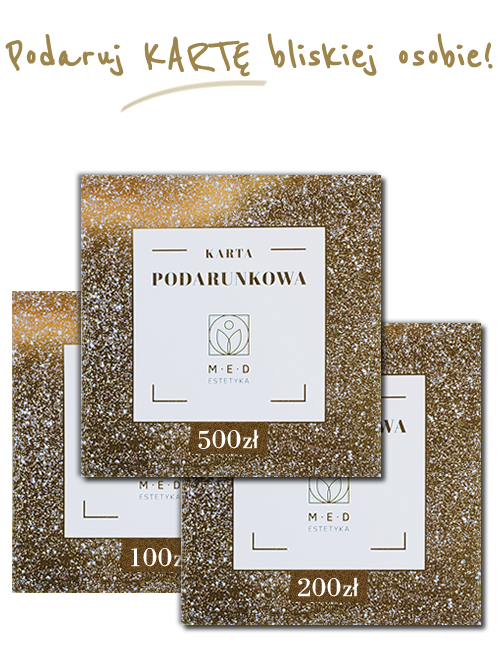Liquid cytology examination + CINtec Plus P16/Ki67
Material: Other material
Price of the study: PLN 330
Waiting time: result after 16 working days
Booking:
Price of the study: PLN 330
Waiting time: result after 16 working days
Booking:
- Advance appointment booking required.
Preparation for the study
Detailed for women
- The test is best performed at least 4 days after the last menstrual period and no later than 4 days before the start of menstruation. Do not use vaginal medications for at least 4 days before the test. At least 1 day should have elapsed since the last gynecological /USG transvaginal examination.
- The test material is a cervical swab taken on a liquid medium.
- The patient should not: wash her vagina and have intercourse for 24 hours before the test.
Important
We do not accept samples from outside.
Description
Liquid Based Cytology (LBC) is a modern technique of preparing cytological specimens, which reduces errors, improves the quality of the specimens and allows multiple tests to be performed from a single sample.
In this method the smear taken from the cervix with a cytological brush is preserved in a special liquid and thus delivered to the laboratory. The brush tip is placed in the container along with the material, so that it reaches the laboratory in one piece, without any loss as in the case of a standard smear.
The fluid in which the material is stored allows to preserve the shape of the cells and at the same time allows to remove mucus, yeast cells, bacteria and cells that may appear in inflammation.
Liquid cytology is more accurate in detecting both precancerous conditions and cancerous cells, while reducing the number of necessary examinations.
A great advantage of the LBC technique is the possibility of performing additional diagnostic tests from the same sample, without the necessity of calling the patient again, thanks to storing the material in a special liquid (HPV, Chlamydia trachomatis).
The examination performed by the LBC technique, unlike the traditional method, may be performed less frequently, i.e. once every 3 years. Once every 3 years.
The Cintec Plus test is used to deepen the diagnosis of precancerous lesions and cervical cancer in cases where the cytological result is abnormal or inconclusive.
Cervical cancer is the second most common cancer worldwide.
In Poland, about 3,500 cases are diagnosed each year, half of the patients die due to late diagnosis. One of the main causes of cervical cancer is the human papillomavirus HPV ( Human Papillomavirus ). Cervical cancer is a malignant tumor that develops from the epithelium covering the cervix or cervical canal. To date, about 200 types of the virus have been isolated, however only some of them, are sexually transmitted and are associated with high-grade dysplasia and cervical cancer. Due to their varying oncogenic potential, a distinction is made between high-risk (HR) HPV viruses - HPV 16, HPV 18, HPV 31, HPV 33 and HPV 45, which are associated with more than 80 percent of precancerous cervical cancer lesions, and low-risk (LR) viruses - HPV 6 and HPV 11, which are associated with benign lower-grade intraepithelial lesions or the development of condylomas.
During acute infection with high-risk HPV, viral genes are expressed in mature epithelial cells and their cell cycle is disrupted. Uncontrolled cell proliferation (proliferation) occurs, reflected by the production of p16 and ki 67 proteins called biomarkers of infection.
P16 protein is a protein that plays a major role in cell cycle control, and Ki-67 protein is a cell proliferation protein.
The CINtec plus test detects both of these proteins, making it possible to detect cancerous lesions at the cellular level at a very early stage of their development.The test is characterized by high sensitivity and specificity.
The p16/Ki-67 test in combination with cytological examination, and HPV testing is important in making the most accurate diagnosis and interpretation of difficult cases such as ASCUS, LSIL, ASC-H or adenomatous lesions.
The most complete, reliable and sensitive method of testing for cervical cancer is liquid cytology ( LBC cytology) supplemented with HPV testing and CINtec plus.
The combination of these three diagnostic tests is particularly important when an abnormal or difficult-to-interpret cytology test result is obtained.
In this method the smear taken from the cervix with a cytological brush is preserved in a special liquid and thus delivered to the laboratory. The brush tip is placed in the container along with the material, so that it reaches the laboratory in one piece, without any loss as in the case of a standard smear.
The fluid in which the material is stored allows to preserve the shape of the cells and at the same time allows to remove mucus, yeast cells, bacteria and cells that may appear in inflammation.
Liquid cytology is more accurate in detecting both precancerous conditions and cancerous cells, while reducing the number of necessary examinations.
A great advantage of the LBC technique is the possibility of performing additional diagnostic tests from the same sample, without the necessity of calling the patient again, thanks to storing the material in a special liquid (HPV, Chlamydia trachomatis).
The examination performed by the LBC technique, unlike the traditional method, may be performed less frequently, i.e. once every 3 years. Once every 3 years.
The Cintec Plus test is used to deepen the diagnosis of precancerous lesions and cervical cancer in cases where the cytological result is abnormal or inconclusive.
Cervical cancer is the second most common cancer worldwide.
In Poland, about 3,500 cases are diagnosed each year, half of the patients die due to late diagnosis. One of the main causes of cervical cancer is the human papillomavirus HPV ( Human Papillomavirus ). Cervical cancer is a malignant tumor that develops from the epithelium covering the cervix or cervical canal. To date, about 200 types of the virus have been isolated, however only some of them, are sexually transmitted and are associated with high-grade dysplasia and cervical cancer. Due to their varying oncogenic potential, a distinction is made between high-risk (HR) HPV viruses - HPV 16, HPV 18, HPV 31, HPV 33 and HPV 45, which are associated with more than 80 percent of precancerous cervical cancer lesions, and low-risk (LR) viruses - HPV 6 and HPV 11, which are associated with benign lower-grade intraepithelial lesions or the development of condylomas.
During acute infection with high-risk HPV, viral genes are expressed in mature epithelial cells and their cell cycle is disrupted. Uncontrolled cell proliferation (proliferation) occurs, reflected by the production of p16 and ki 67 proteins called biomarkers of infection.
P16 protein is a protein that plays a major role in cell cycle control, and Ki-67 protein is a cell proliferation protein.
The CINtec plus test detects both of these proteins, making it possible to detect cancerous lesions at the cellular level at a very early stage of their development.The test is characterized by high sensitivity and specificity.
The p16/Ki-67 test in combination with cytological examination, and HPV testing is important in making the most accurate diagnosis and interpretation of difficult cases such as ASCUS, LSIL, ASC-H or adenomatous lesions.
The most complete, reliable and sensitive method of testing for cervical cancer is liquid cytology ( LBC cytology) supplemented with HPV testing and CINtec plus.
The combination of these three diagnostic tests is particularly important when an abnormal or difficult-to-interpret cytology test result is obtained.
Development and preparation of material (applies to contractors only)
187
cytology


